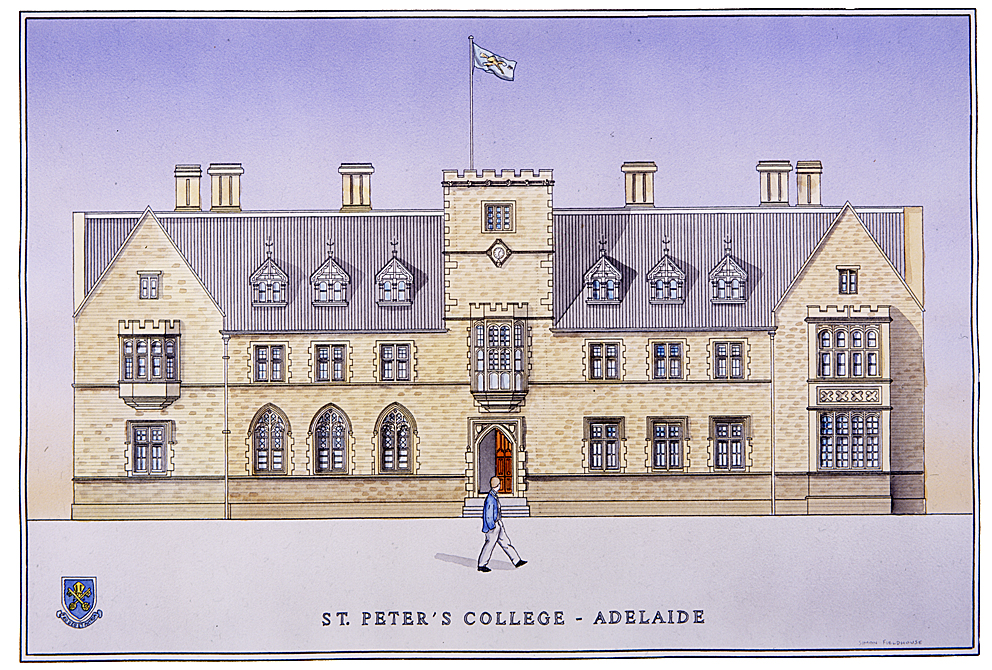
St. Peter's College Adelaide
St. Peter's College, located in Adelaide, South Australia, is a renowned educational institution with a rich history and a commitment to excellence in education. Founded in 1847, it is one of the oldest and most prestigious schools in the state. This essay will explore the history, values, academic offerings, and the impact of St. Peter's College in Adelaide.
The history of St. Peter's College is deeply intertwined with the history of South Australia. Established by the Anglican Church, the school's mission has always been to provide a high-quality education to its students. Over the years, it has evolved into a co-educational institution, catering to students from diverse backgrounds and communities.
St. Peter's College prides itself on a strong set of values that guide its educational approach. The school places a strong emphasis on academic excellence, but it also values the development of character, resilience, and a sense of social responsibility. The school's motto, "In Lumine Tuo Videbimus Lumen" (In Your Light, We Shall See Light), reflects its commitment to nurturing well-rounded individuals who are not only academically adept but also ethically sound.
Academically, St. Peter's College offers a wide range of programs to cater to the diverse needs and interests of its students. From the Junior School to the Senior School, students receive a comprehensive education that focuses on the development of critical thinking, problem-solving skills, and a lifelong love for learning. The school consistently ranks among the top institutions in the state for academic achievement.
In addition to academics, St. Peter's College places a strong emphasis on co-curricular activities. The school offers a wide array of opportunities in sports, arts, and community service. Students are encouraged to explore their passions and talents beyond the classroom, fostering a holistic development that includes physical fitness, creativity, and social engagement.
Furthermore, the impact of St. Peter's College extends beyond the classroom and the campus. Alumni of the school have gone on to make significant contributions in various fields, including politics, business, the arts, and academia. Their achievements reflect the values and education instilled by the institution, shaping them into leaders and role models in society.
In conclusion, St. Peter's College, Adelaide, stands as a beacon of quality education and character development in South Australia. With a rich history, strong values, a commitment to academic excellence, and a diverse range of co-curricular opportunities, it continues to shape generations of young individuals into responsible and successful members of society. The school's impact goes far beyond its walls, leaving a lasting legacy in the lives of its students and the broader community. St. Peter's College remains a cornerstone of educational excellence and personal growth in Adelaide.
The architecture of St. Peter's College is a testament to its historical significance. The school's main building, known as the "Big School," is a beautiful example of neo-Gothic architecture, featuring intricate stone carvings, arched windows, and stunning spires. The design of the campus reflects the school's commitment to tradition and heritage. The chapel, in particular, is a striking feature, providing a serene and spiritual space for reflection and worship.
Beyond the physical structure, St. Peter's College's architecture extends to the layout of the campus, which includes lush green spaces and historic buildings. The well-maintained grounds offer a tranquil environment conducive to learning and personal development.
The school boasts an impressive list of famous alumni who have made notable contributions in various fields. Among its distinguished graduates is Alexander Downer, a prominent Australian politician who served as the Minister for Foreign Affairs and the Leader of the Liberal Party. His work in diplomacy and politics has left a lasting impact on the country's international relations.
St. Peter's College has also nurtured creative talents, including Max Fatchen, a well-known South Australian author and journalist. Fatchen's literary contributions have enriched Australian literature, particularly in the field of children's literature.
In the world of sports, the school has produced accomplished athletes, with many students representing Australia in various disciplines. Notably, David and Hamish Macdonald, Olympic rowers, brought honor to both the school and their country with their remarkable achievements on the international stage.
In the arts, St. Peter's College can count accomplished musicians among its alumni. For instance, Geoffrey Parsons, a distinguished Australian pianist, was known for his remarkable interpretations of classical music. His career took him to various international stages, demonstrating the depth of talent nurtured at the school.
The school's tradition of fostering excellence extends to academia as well, with several alumni achieving prominence in the academic world. Dr. Peter Rathjen, an alumnus, is a notable figure in the field of medical research and higher education, having served as the Vice-Chancellor of the University of Adelaide.
In summary, St. Peter's College in Adelaide is not just a place of academic excellence and character development; it also boasts a rich architectural heritage that adds to its historical significance. Its list of famous students demonstrates the school's ability to nurture talents across various domains, leaving a lasting impact on Australian society and the wider world. St. Peter's College's architectural beauty and the achievements of its alumni continue to serve as a source of inspiration for current and future generations of students.